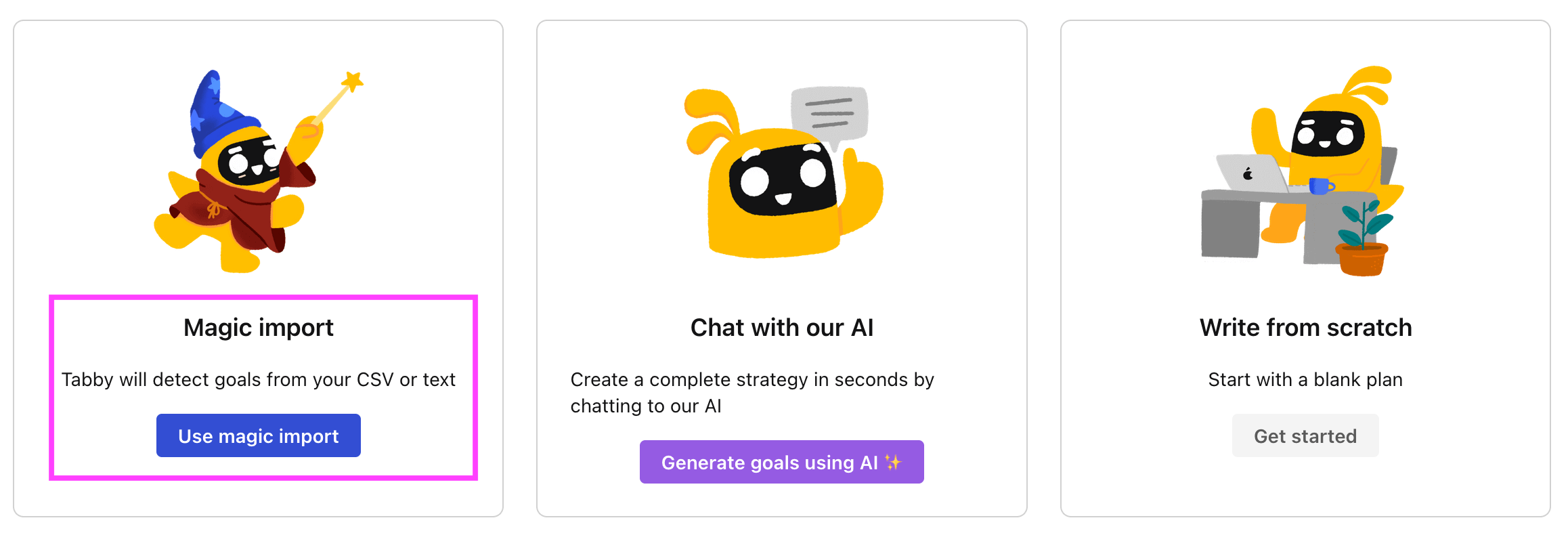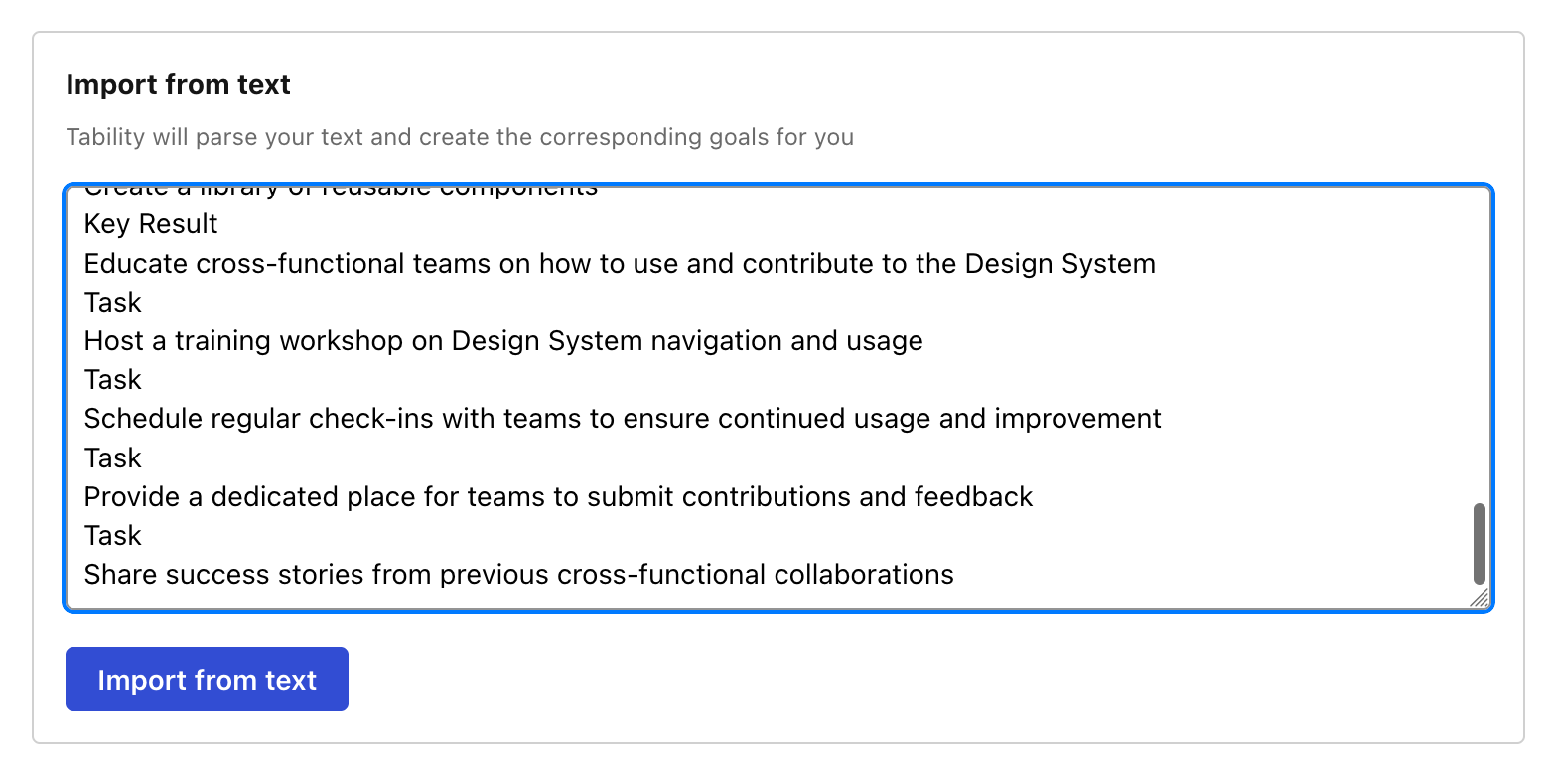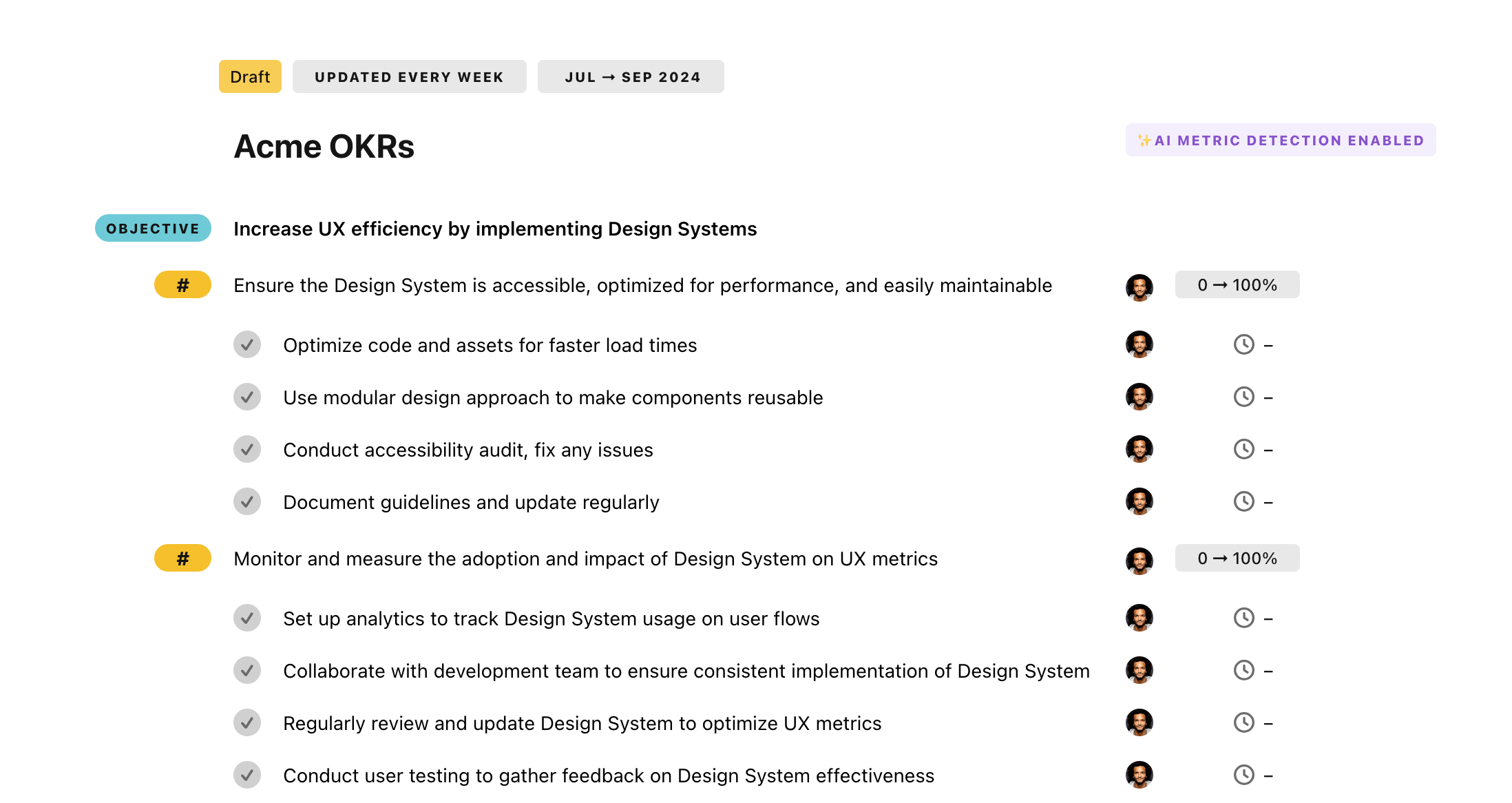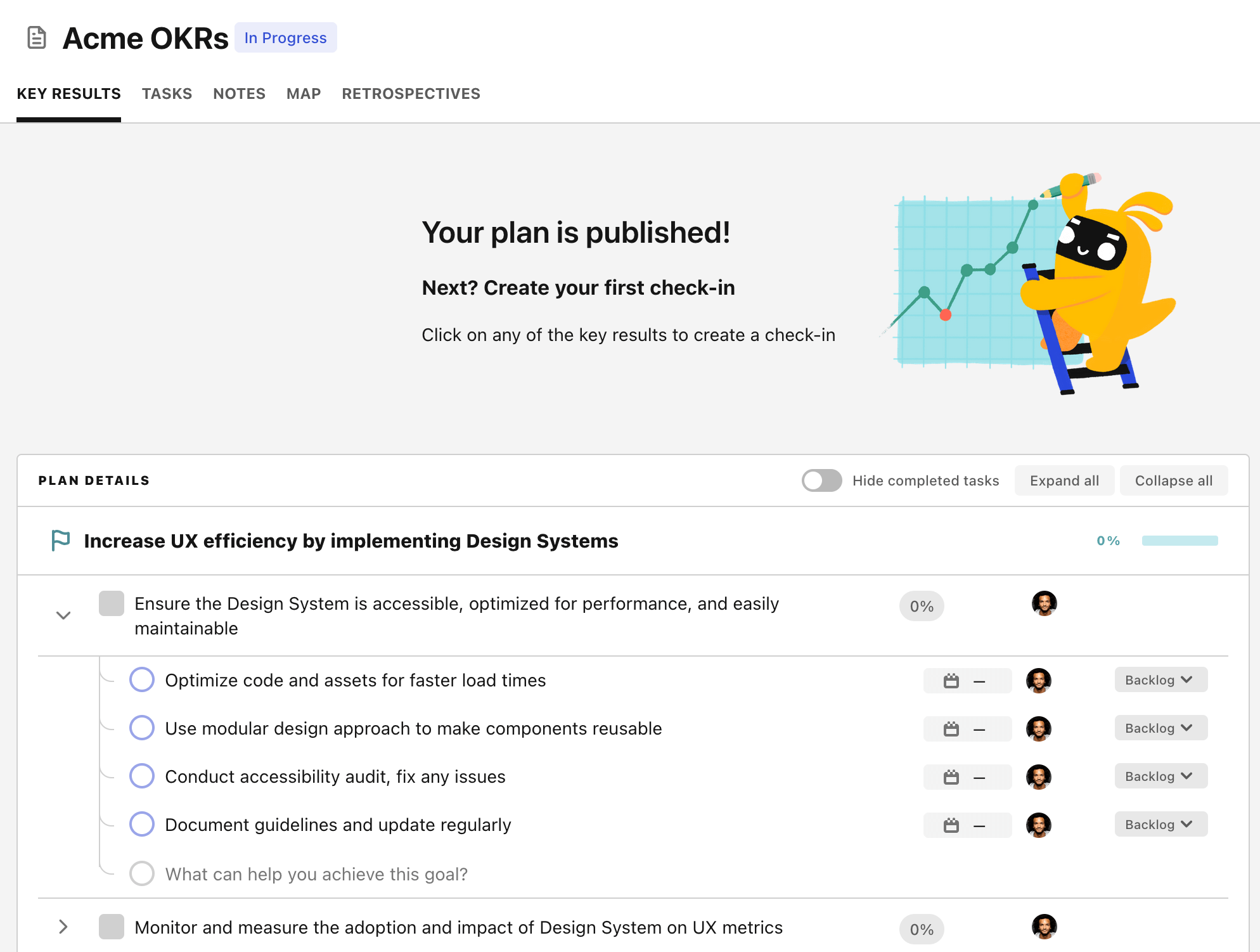OKR template to achieve financial independence and stability
Your OKR template
The second part of the OKR revolves around income increase. The goal here is to boost total earnings by 20% via discovery and pursuit of additional revenue sources. The initiatives to achieve this goal have not been explicitly defined in this OKR and would need to be specified separately.
Following on, this OKR ultimately aims at reducing non-essential expenses by 10% to ensure effective budgeting practices. This process would start by developing a cost-effective budgeting plan, then implementing, tracking, and adjusting this budget as needed. Lastly, all current expenses will need to be reviewed so that non-essential costs can be identified.
Overall, the underlying goal of this OKR is to promote wise financial management. Through strategizing proper investment, finding ways to increase income, and optimizing budget to limit unnecessary expenses, financial independence and stability become achievable.
ObjectiveAchieve financial independence and stability
KRInvest 15% of monthly income into high-yield savings or investments
Research high-yield savings or investments
Determine the precise 15% of total income
Allocate funds accordingly
KRIncrease total income by 20% through pursuing additional revenue streams
KRReduce non-essential expenses by 10% through efficient budgeting
Develop a cost-effective budgeting plan
Implement budget, track and adjust as necessary
Review current expenses to identify non-essential costs
How to edit and track OKRs with Tability
You'll probably want to edit the examples in this post, and Tability is the perfect tool for it.
Tability is an AI-powered platform that helps teams set better goals, monitor execution, and get help to achieve their objectives faster.
With Tability you can:
- Use AI to draft a complete set of OKRs in seconds
- Connect your OKRs and team goals to your project
- Automate reporting with integrations and built-in dashboard
Instead of having to copy the content of the OKR examples in a doc or spreadsheet, you can use Tability’s magic importer to start using any of the examples in this page.
The import process can be done in seconds, allowing you to edit OKRs directly in a platform that knows how to manage and track goals.
Step 1. Sign up for a free Tability account
Go tohttps://tability.app/signup and create your account (it's free!)
Step 2. Create a plan
Follow the steps after your onboarding to create your first plan, you should get to a page that looks like the picture below.

Step 3. Use the magic importer
Click on Use magic import to open up the Magic Import modal.
Now, go back to the OKR examples, and click on Copy on the example that you’d like to use.

Paste the content in the text import section. Don’t worry about the formatting, Tability’s AI will be able to parse it!

Now, just click on Import from text and let the magic happen.

Once your example is in the plan editor, you will be able to:
- Edit the objectives, key results, and tasks
- Click on the target 0 → 100% to set better target
- Use the tips and the AI to refine your goals
Step 4. Publish your plan
Once you’re done editing, you can publish your plan to switch to the goal-tracking mode.

From there you will have access to all the features that will help you and your team save hours with OKR reporting.
- 10+ built-in dashboards to visualise progress on your goals
- Weekly reminders, data connectors, and smart notifications
- 9 views to map OKRs to strategic projects
- Strategy map to align teams at scale